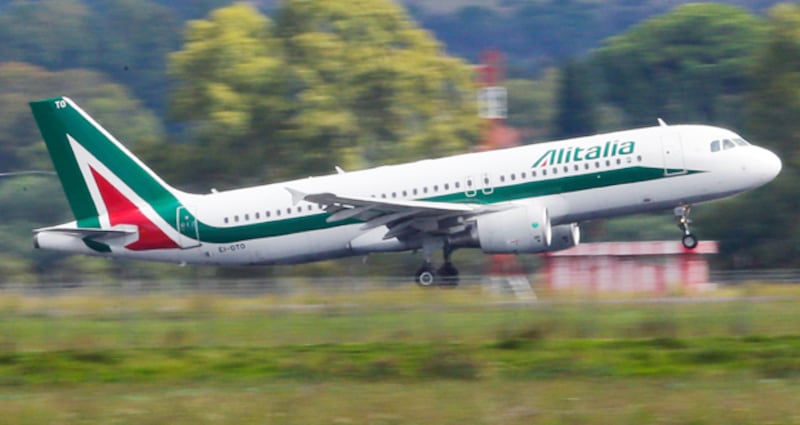For decades the National Accounts has been the bible for economists studying the economy. The most common simple measure of economic welfare is GDP, though in Ireland we have long regarded GNP as a better measure because it removes many of the distortions related to multinationals' activities.
Ireland’s output as measured by GDP was affected when many valuable pharmaceutical drugs produced here came off patent, the so-called “patent cliff”. However, the effect on employment in Ireland was negligible – it was the profits earned by foreign companies, which were being remitted abroad, that took the hit. GNP, which corrects for the profit outflow, proved the more accurate measure.
However, GNP too has its drawbacks as a way to measure economic health.


A key factor making the measurement of economic welfare more complicated is globalisation. As shown in the graph, imports have risen as a share of final demand in EU economies such as the Netherlands and Germany, as well as in Ireland. Increasingly when you buy a good, or even a service, parts of it have been produced in many different economies, making accounting for the beneficiaries of the final sale difficult.
Over the last few years a number of new developments have made Irish economic statistics less easy to interpret.*
Under national accounting rules, where goods are manufactured abroad on behalf of an Irish company and where they are then sold to a third country without ever passing through Ireland they are now treated as an import into Ireland and an export from Ireland. Last year, this made our exports look very large.
However, because these “special” exports were exactly offset by higher imports and higher profits paid abroad by the foreign-owned companies, there was no net benefit to Ireland. For those who rely on export numbers to measure Ireland’s growth this was disconcerting. But the numbers for GNP were unaffected. Working in the Department of Finance in the early 1970s, I faced a problem in preparing forecasts for the economy: a large ship, which had been manufactured in Scotland for Irish Shipping, was so big it could not enter any Irish port. This meant that, using the accounting rules, it could not be counted as an import. This was going to complicate my forecasts.
My boss agreed with the CSO that if the ship sailed through Irish waters on its maiden voyage, it would be counted as an import – problem solved! However, it turns out a similar type of problem is now coming back to haunt us, a problem which cannot be solved by calling the CSO.
Aircraft leasing
This summer the National Accounts will change to fully include
aircraft leasing
operations in Ireland, which are considerable – leasing firms based in Ireland account for about 10 per cent of the world’s civilian aircraft. Travelling in Europe recently, I noticed that the Italian airline Alitalia’s planes are registered in Ireland (with a registration EI) because they are leased from an Irish company.
However, most of the aircraft owned by Irish-based leasing companies are not registered here. The US might not be too happy if Senators found themselves flying home to their states in Irish-registered aircraft! Instead, while actually owned in Ireland, leased aircraft are registered in the US (with an N registration) so that US airspace still looks American.
The aircraft owned by the leasing firms based here are worth somewhere between €50 billion and €100 billion. Thus, the potential effects of operations on this scale on Irish national accounting figures will be large. When the CSO include these aircraft in the Irish data for the first time this summer, taking account of the new aircraft purchased by the leasing companies could add billions to Irish imports. While in this case there will be no effect on GDP or GNP, it will affect Ireland’s current account surplus (the excess of exports over imports), which is an important indicator of whether the economy is on a sustainable growth path. The complexity of these technical statistical quirks has made the task of explaining the Irish economy to a foreign audience very difficult in recent years. Nowadays, with so much reliance on foreign markets to finance our sizeable national debt, there are potential real costs at stake if our foreign lenders can’t get to grips with puzzling Irish economic data.
As a highly globalised economy, Ireland’s trade and GDP data have always given a somewhat skewed picture of the real economy. However, other countries are now experiencing problems with how standard components of their national accounts should be interpreted. Understanding what is happening today in the Netherlands economy using standard national accounts aggregates is just as complex as interpreting Ireland’s figures. The data for the mighty US economy are also significantly affected by globalisation.
When US firms both manufacture and sell their products abroad – think Apple, which builds smartphones in China and sells them all over the world – the value added is included in US GDP, in spite of the fact that no US workers or machinery were involved. The measured output per head of the IT sector in the US is artificially raised by this accounting practice.
Unfortunately there is no single simple statistic that captures satisfactorily all the implications of complex global operations on national economies. GNP remains the best, though still imperfect, measure of economic welfare. To fully understand what is going on in the economy today a lot of supplementary data are needed, as well some forensic national accounting.
* http://iti.ms/1GBFJJ2 ** http://iti.ms/1GBFLAL










